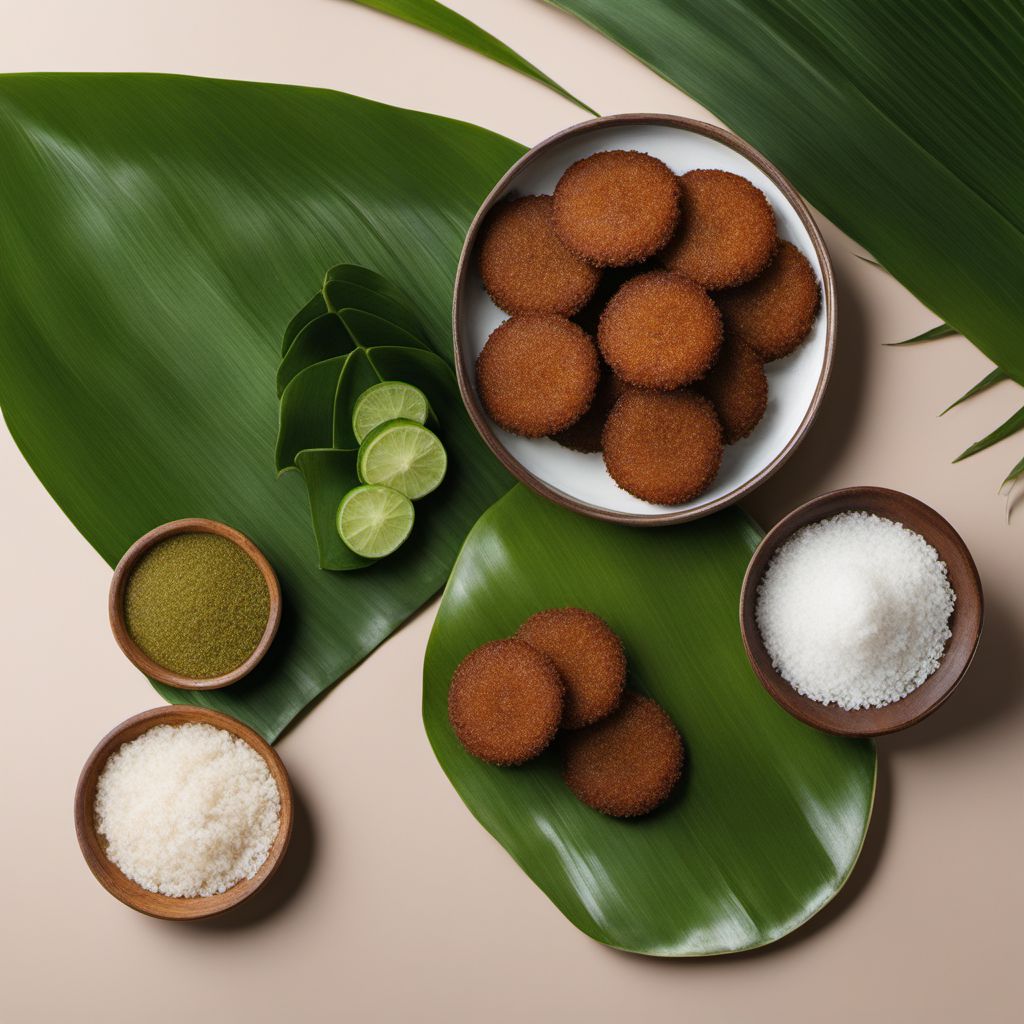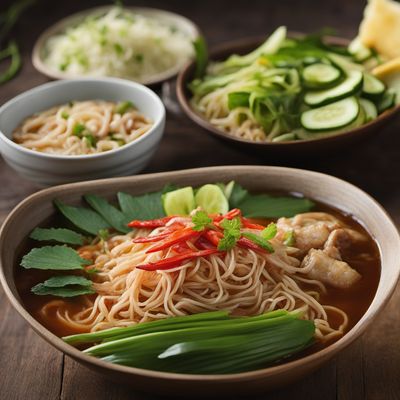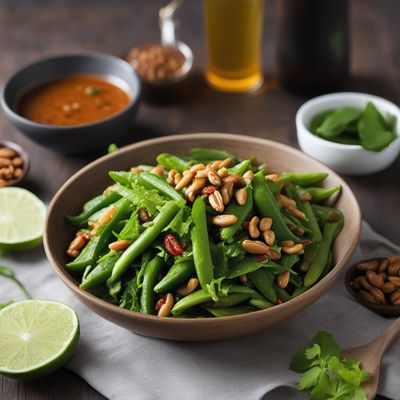
Recipe
Kuih Akok Recipe
Coconut Delight: Kuih Akok - A Malaysian Sweet Treat
4.4 out of 5
Indulge in the rich flavors of Malaysian cuisine with this delightful recipe for Kuih Akok. This traditional dessert showcases the essence of Malaysian sweets, combining the creaminess of coconut milk with the sweetness of palm sugar.
Metadata
Preparation time
15 minutes
Cooking time
25 minutes
Total time
40 minutes
Yields
12 servings
Preparation difficulty
Easy
Suitable for
Vegetarian, Vegan (if using vegan palm sugar), Gluten-free (if using gluten-free rice flour), Dairy-free, Nut-free
Allergens
N/A
Not suitable for
Paleo, Keto, Low-carb, High-protein, Low-fat
Ingredients
-
200g (1 1/2 cups) rice flour 200g (1 1/2 cups) rice flour
-
400ml (1 3/4 cups) coconut milk 400ml (1 3/4 cups) coconut milk
-
150g (3/4 cup) palm sugar, grated 150g (3/4 cup) palm sugar, grated
-
1/4 teaspoon pandan extract 1/4 teaspoon pandan extract
-
1/4 teaspoon salt 1/4 teaspoon salt
-
Banana leaves, for lining the mold Banana leaves, for lining the mold
Nutrition
- Calories (kcal / KJ): 150 kcal / 628 KJ
- Fat (total, saturated): 5g, 4g
- Carbohydrates (total, sugars): 25g, 15g
- Protein: 2g
- Fiber: 1g
- Salt: 0.1g
Preparation
-
1.In a mixing bowl, combine the rice flour, coconut milk, pandan extract, and salt. Mix well until the batter is smooth and free of lumps.
-
2.In a small saucepan, melt the grated palm sugar with a splash of water over low heat. Stir until the palm sugar has completely dissolved and the mixture becomes syrupy.
-
3.Gradually pour the palm sugar syrup into the batter while continuously stirring. Mix until well combined.
-
4.Preheat the oven to 180°C (350°F).
-
5.Line the Kuih Akok mold with banana leaves to prevent sticking.
-
6.Pour the batter into the mold, filling each cavity about 3/4 full.
-
7.Bake in the preheated oven for 20-25 minutes, or until the edges turn golden brown and the center is set.
-
8.Remove from the oven and let the Kuih Akok cool in the mold for a few minutes.
-
9.Gently remove the Kuih Akok from the mold and allow them to cool completely on a wire rack.
-
10.Serve the Kuih Akok at room temperature and enjoy!
Treat your ingredients with care...
- Rice flour — Make sure to use a fine rice flour for a smooth batter.
- Coconut milk — Use full-fat coconut milk for a rich and creamy texture.
- Palm sugar — Grate the palm sugar to ensure it dissolves easily in the batter.
- Pandan extract — If pandan extract is not available, you can substitute it with vanilla extract for a different flavor profile.
- Banana leaves — If banana leaves are not accessible, you can line the mold with parchment paper instead.
Tips & Tricks
- To enhance the flavor, you can add a pinch of salt to the batter.
- For a more aromatic Kuih Akok, you can add a few drops of pandan essence in addition to the pandan extract.
- If you prefer a sweeter taste, you can increase the amount of palm sugar in the batter.
- Make sure to grease the Kuih Akok mold with a little oil or cooking spray before lining it with banana leaves to prevent sticking.
- Serve the Kuih Akok with a sprinkle of desiccated coconut for added texture and flavor.
Serving advice
Serve the Kuih Akok as a delightful snack or dessert. They are best enjoyed at room temperature to fully appreciate their soft and chewy texture.
Presentation advice
Arrange the Kuih Akok on a platter or individual dessert plates. Garnish with a sprinkle of desiccated coconut for an attractive presentation. The golden brown color of the Kuih Akok against the vibrant green of the pandan extract creates a visually appealing display.
More recipes...
For Kuih akok
For Malaysian cuisine » Browse all
More Malaysian cuisine dishes » Browse all

Sagu
Sagu is a popular Brazilian dessert made with tapioca pearls and coconut milk. It is a sweet and creamy dessert that is often served at special occasions.

Kolo mee
Kolo Mee
Kolo mee is a popular Malaysian noodle dish that is perfect for a quick and satisfying meal. It is a combination of thin noodles, minced pork, and...

Nagasari
Nagasari is a traditional Indonesian dessert that is made with rice flour and coconut milk. It is a sweet and fragrant dessert that is perfect for...




